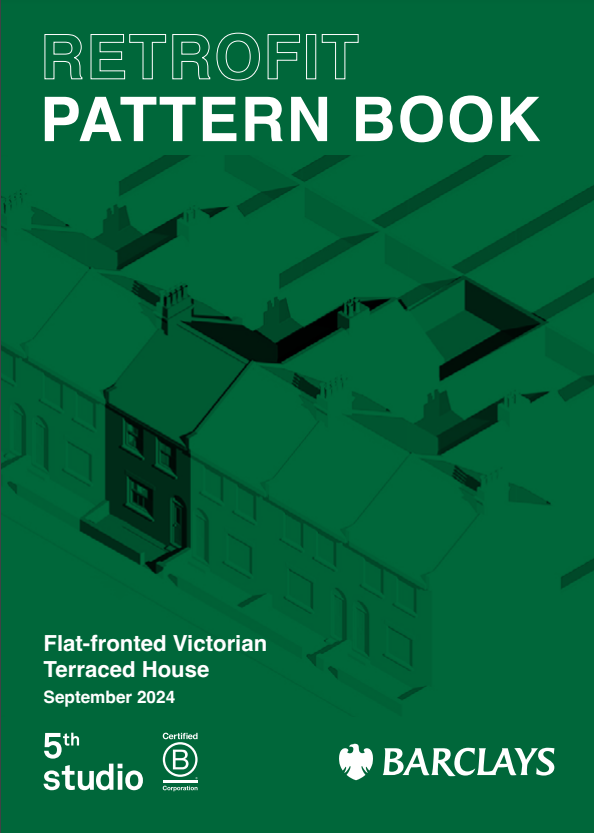New guidance released on retrofitting the flat-fronted Victorian terraced archetype, with practical tips and resources for homeowners on how to improve energy efficiency.
Together with reducing carbon emissions and enhancing comfort, this Retrofit Pattern Book illustrates the value of investing in upgrading the building fabric, improving energy efficiency, and decarbonising the energy used in our homes.
The Retrofit Pattern Book provides general information on energy use and illustrates how best to increase energy efficiency, and maintain and increase comfort while reducing the risk any damage arising as the unintended consequence of inappropriate use of materials.
It is primarily intended for use by homeowners, but might also be of use to landlords or people in construction trades working on home retrofit projects.
Introduction to the Retrofit Pattern Book
 The Retrofit Pattern Book is intended as a guide for homeowners. It provides general information on energy use and illustrates how best to increase energy efficiency, whilst maintaining comfort and reducing the risk of unintended consequences.
The Retrofit Pattern Book is intended as a guide for homeowners. It provides general information on energy use and illustrates how best to increase energy efficiency, whilst maintaining comfort and reducing the risk of unintended consequences.
The Victorian 'two-up-two-down' terraced house with a garden has come to represent, in the UK, the typical family home. This type of house has, over time, informed different space standards and sizes used in the design of new homes.
Built over 100 years ago, the character of these houses means they remain a popular house type, with Victorian terraced homes representing some 8.5% of England's housing stock. However, they were not constructed to the same energy standards as today's home, so they are likely to need substantial retrofit to support the UK's goals of becoming Net Zero by 2050.
Retrofitting those homes offers the opportunity to greatly increase the comfort, health, and energy efficiency of these homes, bringing multiple benefits to residents and the long-term stability of the building.
If you only make a few upgrades to your house, you should consider the benefits of:
- completing any maintenance tasks that are undermining the thermal performance of your house – leaks, blocked vents, etc;
- insulating your loft;
- addressing heat losses from draughts (uncontrolled ventilation);
- upgrading your windows;
(By this point, you annual energy use could well have been reduced by about 40%)
- installing an air source heat pump.
How is this Retrofit Pattern Book different?
This Retrofit Pattern Book has been prepared in the spirit of its 19th century forebears, to provide general guidance to improve the energy efficiency of the flat-fronted Victorian terraced house.
Unlike the original pattern books, this book is aimed at homeowners rather than house builders. It is intended to provide a guide to how this type of house has evolved, improving the homeowners understanding of how retrofit could benefit their property.
This book describes how the house was intended to operate, the nature of subsequent changes to its pattern of use, heating, lighting, etc, and how this has affected the homes current performance, comfort levels, and energy efficiency.
The Retrofit Pattern Book provides general guidance on energy use and illustrates how best to increase energy efficiency through a series of levels of intervention.
These interventions are described to help the homeowner understand how to improve comfort and reduce the risk of unintended consequences.
It also describes the additional energy savings, energy cost, and carbon emission reductions which investment in improving services (heating appliances) and domestic renewable energy generation can bring.
End of Preview

